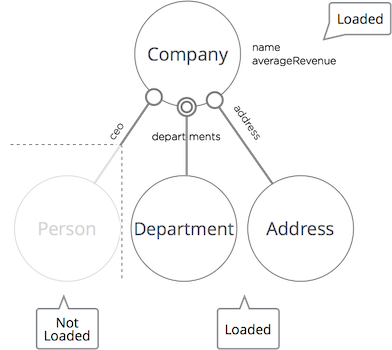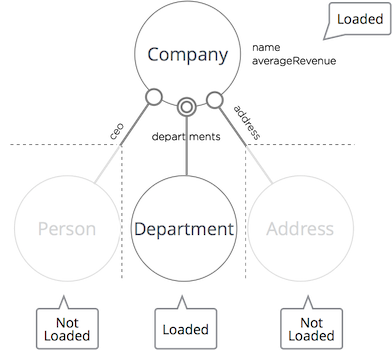Traversing Criteria
Traversing criteria allow you to decide how much information is returned for a query.
On this page
General
Traversing criteria is our implementation of the lazy/eager loading concept, which allows you to return absent information for specific elements that can be loaded at a later point. The main benefit of lazy loading is it lowers the cost of your search, as you can target the data returned, rather that returning a large amounts of data, lowering transmission costs.
The default behavior is as follows:
- simple types and enums are loaded immediately
- accessing complex types triggers further query
Configuration for customized behavior is done via traversing criteria. The traversing criterion is defined by patterns which can be created by the static class TC.

Lazy Loading and Eager Loading
With traversing criteria, you can specify what information to load when retrieving a network of entities.
Traversing Criteria Examples
Lazy Loading of One Complex Property

TraversingCriterion traversingCriterion =
TC.create()
.pattern()
.entity(Company.T).property("ceo")
.close()
.done()
query.setTraversingCriterion(traversingCriterion);
Lazy Loading of Two Complex Properties

TraversingCriterion traversingCriterion =
TC.create()
.pattern()
.entity(Company.T).property("ceo")
.close()
.pattern()
.entity(Company.T).property("address")
.close()
.done();
query.setTraversingCriterion(traversingCriterion);
You can achieve the same result using a disjunction:
TraversingCriterion traversingCriterion =
TC.create()
.pattern()
.entity(Company.T)
.disjunction
.property("ceo")
.property("address")
.close()
.close()
.done();
query.setTraversingCriterion(traversingCriterion);
What's Next?
For more information about how to use traversing criteria, see Traversing Criteria in Detail.